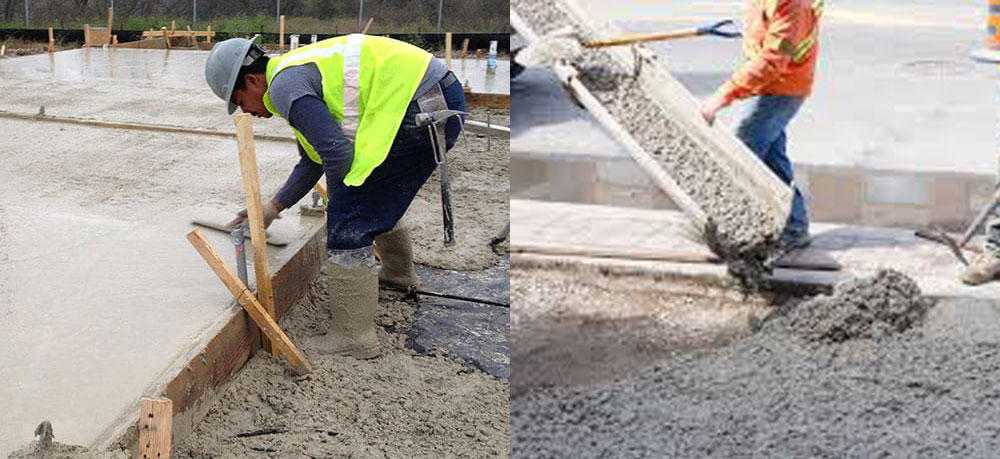
Some useful guidelines for repairing of concrete
The longevity of modern concrete is maintained for a prolonged period when the concrete is proportioned and arranged at the construction site in a perfect manner.
Besides, ageing of construction, there are other factors to influence the stability and reliability of the concrete construction which range from the impact of dreadful weather, cavitations, abrasion-erosion, corrosion of reinforcement, impacts of chemicals, carbonation, cracks, design and construction defects, etc. Under such circumstances, it is essential to repair concrete quickly as possible.
Given below, some useful tips for undertaking proper repairing work for concrete :-
1. Find out the reason for damage in concrete
It is the most vital step for concrete repairing. It is necessary to recognize the proper reasons of damage, and alleviate that reasons so that repair is maintained for long period otherwise the repair may weaken again under the similar reason, and leads to waste of effort and money.
It is required to recognize the action of freeze and thaw, cavitations, abrasion-erosion, structural overload or movement in the form of cracks or spalling of concrete.
In specific cases, it becomes difficult to determine the exact rasosn of the damage to concrete and for this purpose some tests like carbonation of concrete, the chemical attack on concrete, alkali-aggregates reaction in concrete etc are required. It is recommended to consult with experienced & authorized structural engineer or repair experts to conduct testing of concrete.
2. Estimate the Range of Damage in Concrete
Work out the range and intensity of damage i.e. how much concrete gets damaged as well as how this damage will impact the longevity of concrete in the future. Alternatively, also determine how much strength or load bearing capability are lost for concrete.
Concrete soundness test is considered as the most recognized and simple method to estimate the damage of concrete. Under this test, a hammer or large metal is used to the surface of the concrete. If the sound of the strike produces clear ringing sound, then the concrete is long-lasting, and if the sound remains hollow or dull, the concrete is considered as delaminated or unsecured concrete (weak concrete) and the repairing should be done instantly.
There various non-destructive tests to estimate the damage in concrete. Given below, the detailed lists of some crucial non-destructive tests to estimate the stability or damage of concrete.
? Rebound Hammer Test
? Ultrasonic Pulse Velocity Test
? Core Test
? Carbonation Test
? Chloride Content Test
It is recommended to undertake some maintenance works to recognize the damage of concrete at an initial phase. The proper and regular maintenance of the house minimizes the cost of repair, and ultimately saves money significantly.
Preparation Prior To Repairing of Concrete
Elimination of decayed or damaged concrete is crucial for undertaking a perfect repair. This step comprises of the cutting/chiselling of concrete in appropriate shape, elimination of loose concrete, steel cleaning and the coating of bonding agent on reinforcement steel, cleansing of the repair area, use of the bonding agent on the concrete surface (to create a exact bond among existing and new concrete), use of repair method, and curing of repaired surface.
4. Selection of Repair Materials and Methods of Repair
Repair materials and the repairing process should be chosen on the basis of the damage of concrete, size of repair work, the completion time of repair work, etc. Repair materials and repairing process should be arranged in much a manner that it will not speed up the damage of existing concrete or reinforcement steel.
5. Curing of Repair
The condition of the curing varies for different repairs materials. The manufacturers of repair materials always indicate the curing need of those specific materials in their material catalogue. Some materials need comprehensive water curing, whereas less curing is required for others. Some require protection devoid of water exposure unless they become hardened.
It should be remembered that, insufficient or inappropriate curing will weaken the performance of repair materials as well as the stability of repaired concrete/structure. Finally, the cost of rework of repairing will be raised significantly. Therefore, curing should be perfect once the repairing of concrete is completed.
To get the complete solution of the above problem, go through the following article gharpedia.com


